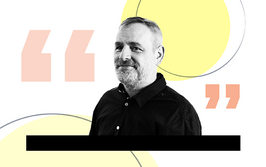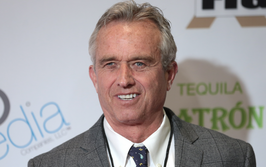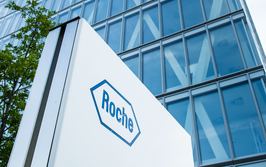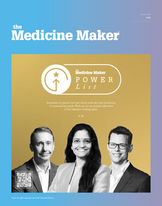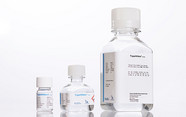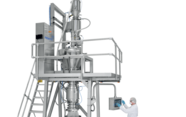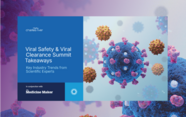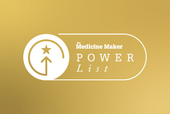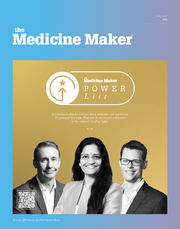The Front Lines of Tuberculosis Vaccine Research
There has been no new TB vaccine for over 100 years, but a candidate at the Gates Medical Research Institute in phase III has just finished enrolling the target of 20,000 participants – eleven months ahead of schedule. We find out more.
Stephanie Vine | | 10 min read | Interview

“For me personally, this project is very close to my heart. I spent about a decade at Novartis and GSK, and I’ve brought that experience to Gates MRI to focus on diseases that disproportionately affect underserved populations and present significant challenges to global health. It’s an exciting time. This project means a lot to me, not only because of its scientific importance, but because of its potential to make a difference in the lives of millions.”
Alemnew Dagnew grew up in Ethiopia and saw firsthand the impact of tuberculosis (TB) on the community. Today, he works at the Gates Medical Research Institute (Gates MRI) and is leading the clinical development of a new TB vaccine candidate, which is in phase III and just finished enrolling the target of 20,000 participants across 54 sites in five countries.
TB is the world’s deadliest infectious disease, with around 1.25 million people dying from TB in 2023, according to statistics from the World Health Organization. TB has been affecting humans for thousands of years, but there is only one vaccine available: the BCG (Bacillus Calmette-Guérin) vaccine, which was developed in the early 1900s.
We spoke with Dagnew about why TB research is so scientifically challenging, and the progress being made with the new vaccine.
What is your background and how did you get involved with vaccine research?
I’m originally from Ethiopia, which is one of the high-burden countries for TB. During my time as a medical student, and later while practicing medicine, I saw firsthand the devastating impact TB has on communities.
TB disproportionately affects people from lower socioeconomic backgrounds. As a young physician in Ethiopia, TB was one of the most common conditions we encountered. The burden was – and still is – immense.
I eventually transitioned into the pharmaceutical industry. I spent about a decade at companies such as Novartis and GSK, working on various vaccines. In 2020, I had the opportunity to join the Gates MRI. For me, this was more than just a job; it felt like a way to give back to the communities I came from. Working on a TB vaccine here gives me a chance to contribute to something with the potential for real global impact. It keeps me motivated every day.
Why is TB such a challenging disease to develop new vaccines?
The current vaccine – BCG – has been in use for over 100 years. The challenge with BCG is that while it can provide protection against severe forms of TB in young children, such as TB meningitis, it offers little to no protection against pulmonary TB in adults. This is a key issue because it’s adolescents and adults with pulmonary TB who are primarily responsible for transmitting the disease.
The vaccine candidate that we are working on at Gates MRI is focused specifically on preventing pulmonary TB in adolescents and adults. If it works, the impact could be enormous, both in terms of saving lives and reducing transmission.
As for why TB has been such a stubborn disease to tackle with vaccines; there are several reasons. First, Mycobacterium tuberculosis (Mtb), the bacterium that causes TB, has been co-evolving with humans for thousands of years. It’s been around since ancient times. Evidence of TB has even been found in Egyptian mummies. Because of this long co-evolution, the TB bacterium has developed very sophisticated ways of evading the human immune system.
Even today, our understanding of the immunology of TB remains incomplete. Significant gaps persist in our knowledge of how the immune system responds to Mycobacterium tuberculosis, particularly in distinguishing protective from non-protective immune responses. This complexity makes it challenging to design a vaccine that offers robust and lasting protection.
Gates MRI is working on a vaccine candidate for TB. What work has been done so far?
The vaccine candidate is a recombinant fusion protein called M72, derived from Mtb antigens called Mtb32A and Mtb39A, combined with GSK’s proprietary adjuvant AS01E. GSK worked on this vaccine for many years. Over the years, they’ve conducted multiple phase I and II studies to assess safety and immunogenicity across various populations.
The most recent of these was the phase IIb proof-of-efficacy study – the final study GSK ran before transferring the vaccine candidate to us. That study showed really encouraging results. The vaccine demonstrated an efficacy of 50 percent in preventing pulmonary TB in adults. The Gates MRI licensed the vaccine in 2020 to continue its development and registration in low- and middle-income countries should the phase III results be supportive.
Since the Gates MRI started work on the vaccine, one of the studies we’ve conducted focused on evaluating the vaccine in people living with HIV. The MESA-TB study was carried out at six sites across South Africa to assess both safety and immunogenicity in this population – given the high overlap between HIV and TB in many regions.
That study was recently completed, and the results helped us make an informed decision about including more people living with HIV in our current phase III trial. The results of the MESA-TB study were recently accepted for publication in The Lancet HIV.
How have you prepared for phase III?
We conducted a large epidemiologic study across 14 countries and 45 sites as part of our preparation for the phase III trial.
TB primarily affects people living in low- and middle-income countries, so naturally, you have to conduct your phase III study in the regions where the disease burden is highest. But running large efficacy trials in those settings isn’t easy. To complete a study of this magnitude within a reasonable timeframe, you need a large sample size – and to enroll that many participants, you need a large number of well-prepared clinical sites.
That’s where the epidemiologic study came in. It allowed us to prepare sites and identify TB hotspots in advance of the phase III study. This investment paid off because we were able to initiate the trial in March 2024 and in April 2025, we reached our target of enrolling 20,000 participants across 54 sites in five countries eleven months ahead of schedule.
It’s been a tremendous amount of work since we licensed the vaccine from GSK, and GSK has also been deeply engaged in preparing for vaccine manufacturing and scale-up. Our colleagues in Chemistry, Manufacturing, and Controls (CMC) have done an incredible job – not only to support phase III but to help prepare for eventual commercial supply, if the vaccine proves successful.
What have been those key moments where you and others started to get really excited about the prospect of success for this vaccine?
A trial with 20,000 participants is a major undertaking. Originally, we had planned to complete enrollment over two years, but we finished a year ahead of schedule, which was a huge and very exciting milestone.
This is an event-driven trial, which means we’ll conduct the analysis once we’ve accrued 110 lab-confirmed cases of pulmonary TB. Reaching that event threshold is going to be a pivotal and emotional moment, regardless of the result.
Of course, I’m hopeful about the potential results. I’d love to see the vaccine replicate – or even surpass – the efficacy from the phase IIb study. At the same time, I recognize that the outcome is not something I can control. What we can control, however, is the quality of the trial conduct. We must ensure rigorous execution and a robust analysis that can support regulatory decision-making.
During the pandemic, a lot of COVID-19 vaccines were developed on vastly accelerated timelines. What is needed to allow vaccines for other important diseases to benefit from similar acceleration?
COVID-19 and TB are quite different, so they cannot be compared directly. With COVID-19, the target antigen (the spike protein) was relatively straightforward to identify because it elicited a neutralizing antibody response, which was linked to protection. From an immunological standpoint, identifying the target antigen was relatively simple, which allowed for rapid development.
TB is much more complex. As I mentioned earlier, it’s a challenging pathogen.
The phase III trial would not have been possible without the funding and support from the Gates Foundation and Wellcome. Their commitment made this large-scale effort feasible.
GSK also invested many years in the development of this vaccine. Even after we took the project over, we continue to work closely with GSK on technology transfer, manufacturing, and other aspects of development.
While TB remains a difficult pathogen, the experience has shown that collaboration across organizations, combined with sustained funding, can make accelerated development possible, even for tough diseases like TB.
Have you thought about the cold chain and other logistical challenges in delivering the vaccine?
The vaccine is a two-vial presentation. One vial contains the lyophilized antigen, and the other contains the adjuvant in liquid form. Before administration, the two need to be mixed. In terms of storage, the vaccine needs to be kept between two and eight degrees Celsius, which is standard for many vaccines. From a cold chain perspective, it’s manageable and similar to existing vaccine products that are already being distributed globally.
There’s a lot of work behind the scenes taking place in terms of preparing for vaccine access, implementation, and broader delivery planning. It’s a major effort, involving many partners.
How do you hope that this work and the collaborative efforts involved can influence other projects?
Infectious diseases and health threats do not respect borders; they move with people, and the rise of antimicrobial resistance only compounds the challenge. TB might currently affect people primarily in low- and middle-income countries, but it’s still a global issue. We’ve already seen recent examples of TB cases emerging in countries like the US.
Pharmaceutical companies can play a leading role in addressing global health challenges. Big pharma has a wealth of expertise, infrastructure, and talent. This vaccine is a strong example of what can be achieved through collaboration, and there’s a real opportunity for companies to do more, whether it’s through product development, sharing technologies, or supporting access initiatives. The partnership between GSK, Gates MRI, the Gates Foundation, and Wellcome is a model that others can follow.
Ultimately, the message is simple: collaboration works. If more organizations come together with a shared purpose, we can make a real difference in tackling diseases that continue to cause so much harm around the world.
Final comments?
This study is a massive undertaking, and it would not be possible without the dedication and collaboration of many. I’d like to express my sincere thanks to my colleagues at Gates MRI; the trial participants and their families; the Principal Investigators and site staff; our contract research organizations and vendors; the Independent Data and Safety Monitoring Board; the Community Advisory Boards; the Scientific Advisory Boards; Ethics Committees; Health Authorities; and our funders. I am especially grateful to the Gates Foundation and Wellcome for their critical funding support.
And of course, I want to acknowledge GSK, not just for developing this vaccine over many years, but for continuing to collaborate with us closely throughout this next phase.
For me personally, this project is very close to my heart. I spent about a decade at Novartis and GSK, and I’ve brought that experience to Gates MRI to focus on diseases that disproportionately affect underserved populations and present significant challenges to global health. It’s an exciting time. This project means a lot to me, not only because of its scientific importance, but because of its potential to make a difference in the lives of millions.
I’m hopeful that the vaccine will prove effective, that it will be licensed, and that it will be used across the globe.

Making great scientific magazines isn’t just about delivering knowledge and high quality content; it’s also about packaging these in the right words to ensure that someone is truly inspired by a topic. My passion is ensuring that our authors’ expertise is presented as a seamless and enjoyable reading experience, whether in print, in digital or on social media. I’ve spent fourteen years writing and editing features for scientific and manufacturing publications, and in making this content engaging and accessible without sacrificing its scientific integrity. There is nothing better than a magazine with great content that feels great to read.


